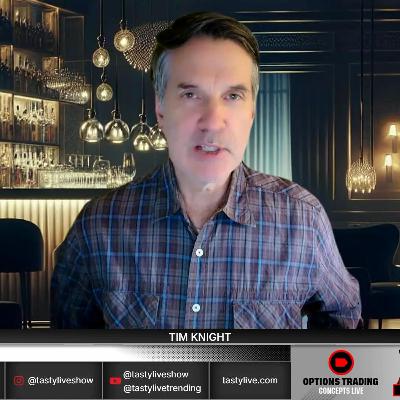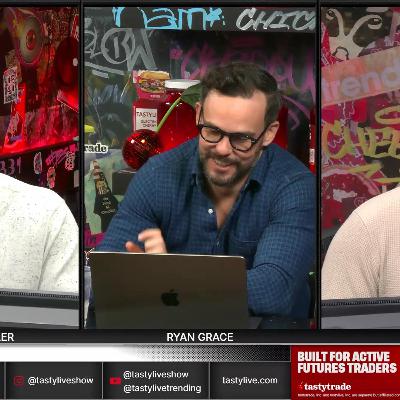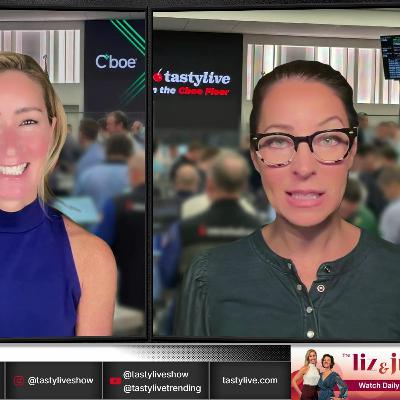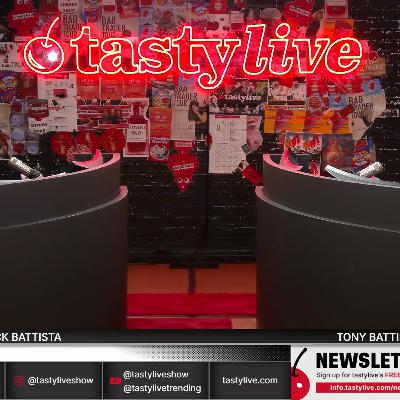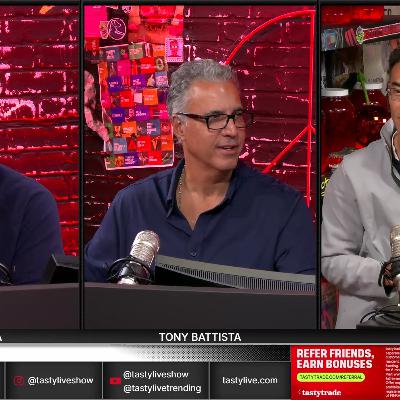Discover tastylive: From Theory to Practice
tastylive: From Theory to Practice

tastylive: From Theory to Practice
Author: tastylive
Subscribed: 1Played: 13Subscribe
Share
© ℗ & © copyright 2013 - 2025 tastylive. All Rights Reserved.
Description
Dr. Schultz (an academic and trader) explains theoretical trading concepts and practical application to take your trading to the next level.
2282 Episodes
Reverse
Markets surged Monday on optimism about a potential US-China trade framework agreement, with negotiators set to meet Thursday. The positive trade outlook pressured gold, silver, and rare earth stocks as tensions appeared to ease.
Qualcomm (QCOM) shares jumped approximately 20% following news of upcoming AI data center chips, potentially challenging NVIDIA's dominance in the space. AMD (AMD) also saw gains after announcing a $1 billion Department of Energy partnership to build supercomputers.
This week represents a critical earnings period with Microsoft (MSFT), Apple (AAPL), Meta (META), Alphabet (GOOGL), and Amazon (AMZN) reporting - companies representing about 25% of the S&P 500's market cap. The FOMC meeting Wednesday adds to what many consider the market's "Super Bowl week."
In this episode of From Theory to Practice, Jim Schultz navigates the current market landscape, discussing significant movements in major indices and commodities. As earnings season heats up, he highlights upcoming reports from major companies and offers insights into strategic positioning. Jim also reviews recent trades and addresses viewer questions. Don't miss this chance to get prepared for a busy trading week!
Ryan Grace from tastycrypto outlined the concept of liquidity pools on decentralized exchanges like Uniswap. These pools allow users to deposit token pairs (such as ETH and USDC) and earn fees from facilitating trades, similar to market making. By providing liquidity within a specified price range, users can generate significant yields - often 30-50% annualized or higher during volatile periods. The strategy resembles options strategies like covered calls and short puts, with narrower ranges providing higher yields but increased risk of going "out of range." With blockchain technology improvements, transaction costs have plummeted from hundreds of dollars to pennies, making liquidity provision accessible to smaller investors. Ryan highlighted how this represents a potential future where tokenized assets could bypass traditional market intermediaries. Meanwhile, crypto markets showed strength with Bitcoin up 4% and Ethereum up 6.5%, maintaining strong correlation with equity markets amid the broader risk-asset rally.
Liz and Jenny discussed significant market movements, noting gold's crossing of the $4,000 level—a key threshold highlighted previously by Tim Knight. Both IBIT and ETH are experiencing strong gains, prompting the hosts to adjust their crypto positions by taking some profits while maintaining exposure through October.
The pair established three earnings diagonal trades in SoFi, PayPal, and UPS ahead of a major earnings week, employing a strategy of selling near-term options at the expected move strike while buying at-the-money options in the following week. They discussed why these inexpensive diagonals (under $300 each) offer attractive risk-reward profiles.
Additionally, they executed a bearish put Zebra in Nike (NKE) and a Jade Lizard in Intel (INTC), while explaining the mechanics of buffer trades as synthetic covered calls with downside protection.
Analysis of SPY options data from 2015-2025 reveals selling 16-delta, 45-day strangles and managing at 21 days consistently outperforms holding 21-day options until expiration. The latter strategy increases tail risk by 34% with only minor profit improvements.
Higher implied volatility environments offer better risk-adjusted returns despite larger drawdowns. While average P&L doubles in high volatility, the conditional value at risk remains proportionally stable.
Holding options near expiration significantly widens P&L distribution. Though extrinsic value declines to zero at expiration (potentially accelerating profits), this period also presents the greatest loss potential.
For ETF short premium strategies, trading longer-duration options and managing early has proven superior over the past decade, creating a tighter, more manageable distribution of returns.
In today's Skinny on Options; Abstract Applications, Dr. Jim discusses the significance of the normal distribution and its foundational role in trading. He emphasizes the central limit theorem, explaining how a large number of observations lead to results that revert back to normal distribution, regardless of the underlying data set. This principle is crucial for traders applying statistical research to their portfolios. The conversation also touches on the importance of managing risk and the probabilistic nature of trading outcomes in the financial markets.
Hosts Nick and Tony welcomed researcher Kai to preview the busiest earnings week of the season with over 450 companies reporting (350+ last week alone), flipping the winner-loser ratio from negative to 52% winners with average 0.5% positive returns. Last week's volatility produced eight stocks with double-digit post-earnings moves including GM up 20%, ISRG up 19%, and Decker's down 13% - representing 2-3x expected moves and creating Kai's "busiest chart ever" in two years of research corners. The historic nature was emphasized when GM and Ford topped mover lists, which Nick noted signals "things getting a little crazy" as these aren't typical market leaders. Broadcom's inclusion in the Mag 7 (replacing Tesla at $1.4T vs NVIDIA's $1.6T) highlighted the AI trade's dominance, with AVGO surging from under $200 to $360. The upcoming week features critical events including Fed meeting Wednesday (98.5% expect 25bp cut - "given" scenario), potential Trump-Xi meeting in Asia driving soybean rally, and major earnings Wednesday-Thursday including Meta, Microsoft, Google, Apple, Amazon, and Coinbase.






